Have you heard any of the following recommendations?
“Don’t let your knees go over your toes when you squat, because it’s bad for the knees.”
“Squatting with your toes turned inward works the outer quads.”
“Front Squats work the lower quads, just above the knees.”
“Full squats for full quads.”
Or, unrelated to Squats, but still related to quad development:
“Leg Press works the outer sweep of the quads.”
“Leg Extensions work the Tear Drop muscle of the quads.”
“Turning the feet inward or outward during Leg Extensions can influence which part of the quadriceps you hit.”
Well, unfortunately, they’re all incorrect. Squats are indeed one of the best exercises you can do for leg development, but there are some simple rules of biomechanics that dictate what Squats ACTUALLY do, and what they don’t do. Let’s look at each of these myths, and see what’s really going on.
The first thing we should establish is the anatomy of the quadriceps – how this muscle works. As the name suggests, there are four parts to it.
Shown below, are the three parts of the quadriceps that do not cross the hip joint. All three of these muscles originate at the top of the femur (aka “the thigh bone”).
The fourth part of the quadriceps (the Rectus Femoris) is shown below.
Notice that it originates on the pelvis, above the hip joint. This means that, of the four parts of the quadriceps, this is the only part that assists in flexing the hip. However, that is not its primary task. The “hip flexor” muscles (iliopsoas, etc.) are the ones that do this best, because they are better positioned for that task.
The important thing to notice is the insertion of all four parts. All four quadriceps muscles (Rectus Femoris, Vastus Medius, Vastus Intermedius and Vastus Lateralis) converge on one single tendon, called the “Quadriceps tendon” – which then attaches to the Patella tendon, which attaches onto the front / top portion of the lower leg (the shin bone). In other words, all four muscles do one thing – they all pull upward on that one single attachment on the shin bone.
It is also important to note that the knee joint only bends one way. Yes, it does have a very small amount of rotation ability, but it’s minute. The knee does not bend to the side (laterally) at all. The exclusive movement of the knee is like that of a hinge – it bends (flexes) and straightens (extends). Period.
As you can see in the illustrations above, the Patella tendon pulls straight upward on the Tibia (the shin bone), in the direction of the knee cap (the patella), which is pulled straight upward by the Quadriceps tendon. This upward pull of the Patella tendon, via the Quadriceps tendon, via the Quadriceps muscle, extends (straightens) the knee, from a flexed (bent) position. The primary function of the Quadriceps, therefore, is knee extension – to straighten the leg.
“Shaping” the Outer Quads and Inner Quads ?
It is impossible to influence the shape of the Quadriceps, beyond simply making it larger (in its own, unique, genetically-determined shape) or allowing it to atrophy (get smaller). If it were possible to emphasize development of the “outer quad” (the Vastus lateralis) – for example – by somehow causing it to work more than other parts of the Quadriceps, it would suggest that it (the Vastus lateralis) has the ability to pull the tibia laterally – toward the outer part of the thigh. But that’s impossible, because the knee does not bend that way, and the Patella tendon cannot pull in that direction.
If it were possible to pull your lower leg slightly outward (to the right, if we’re talking about your right leg) – while still maintaining the femur perfectly straight (not rotating it externally), we’d be able to easily do this while sitting on the edge of a massage table – lower legs hanging straight down. Yet, we simply cannot do that. It’s very easy to prove that the leg does not / cannot bend in any direction other than straight. Only if we allow the femur (upper leg) to rotate externally, can we cause the lower leg to move in that direction. But if we do this, the knee would still be doing the exact same thing – it’s “opening” (extending) the way a hinge would – parallel to its other half (the upper leg). Therefore, the Quadriceps is still doing the same thing – it’s contracting in its entirety (all four parts).
Likewise, if it were possible to emphasize the development of the “inner quad” (presumably this means the Vastus medius, aka “the tear drop” muscle), it would require a knee that allows “inward” movement (extension), as well as a tendon that pulls from that side, rather than from the middle. But that is not the case, as we can clearly see in the anatomical illustrations above.
Ironically, I’ve heard some pro bodybuilders recommend a type of Leg Press movement, whereby one sits at a 45 degree angle on the seat – with one leg resting on the floor and the other leg (foot) on the Leg Press foot plate, and then doing a One-Legged Leg Press from that position. This is said to “develop the outer sweep of the quadriceps”. This is non-sense. One can clearly SEE that the knee is STILL doing the exact same thing it always does – bending and straightening, like a hinge. The Patella tendon and the Quadriceps tendon are STILL pulling straight up the middle (not to one side or the other), and the entire Quadriceps is causing that to happen.
The knee joint, the Patella Tendon and the Quadriceps tendon do not “know”, nor do they “care”, whether you’re sitting sideways or not. They do the one-and-only thing they CAN do, and that is to extend the knee straight out. Believing otherwise is as foolish as believing that if you face North when you perform Squats, it will work one part of the quads – and if you face South, it will work a different part of the quads. The quads don’t know which way you’re facing, and they don’t know how you’re sitting. When they contract, they contract in their entirety – or they don’t contract at all.
Adductors
If you squat with a wide stance and your toes are pointing outward, it will activate the Adductor muscles of the inner thighs. These are not Quadriceps. The Adductor muscles do not cross the knee joint, so they have nothing to do with the extension of the knees. Their job is to bring the femurs from a position that is lateral to the centerline of the body, inward – toward the center. Regular Squats engage the Adductor muscles to some degree, even when they are performed with a normal stance. This is especially true for those whose toes naturally point outward more than most people. If the knees bend outward, the femurs go outward – and that increases the load on the adductors.
The “All or Nothing” Principle of Muscle Contraction
Now that we know that we cannot preferentially stimulate the outer or inner parts of the Quadriceps, the next question is whether we can stimulate the lower part of the Quads (just above the knee) versus the upper part of the Quads.
The “All or Nothing” principle of muscle contraction tells us that when a muscle becomes activated, it does so from origin to insertion – through its entire length. This is perfectly logical, of course. It’s no different than when we do a “Tug of War”.
Let’s look at the illustration above. We’ll call the guy on the left (blue jersey) the “origin” – and we’ll call the guy on the right (red jersey) the “insertion”. This is a reference to the origin and insertion of a muscle, of course. During a Tug of War, the tension is distributed evenly throughout the entire length of the rope. It would be impossible to cause more tension closer to one side, than the other. If a muscle fiber is called into action, it is for one purpose – to bring the origin and the insertion closer together, thereby causing a joint to bend (flex or extend). If the Quadriceps COULD be activated “more” near the insertion end (closer to the knee), it would require a relaxation of the origin end – and that would defeat the purpose. Contraction would be useless if both ends are NOT being pulled toward each other. Therefore, nature does not allow it.
It’s simply impossible to emphasize the contraction of one end of a muscle, more than the other end. It is – therefore – impossible to work the lower end of the Quadriceps by doing Front Squats, nor by doing anything else. The entire Quadriceps contracts, from origin to insertion, and all four parts, regardless of HOW one is activating them. “Full Squats” do not cause Quadriceps development that is any more “full” than partial Squats, even though full range of motion stimulates the muscle better.
So What’s the Difference ?
The question that must now be asked, is “what is the difference between a Front Squat, a regular Squat, a Hack Squat, and a Sissy Squat?” And should we prevent our toes from going over the knees when we squat?
The only difference between any of the above mentioned Squats, is the resistance curve. And – no – we should NOT prevent our toes from going over our knees when we squat. That “advice” is entirely misguided.
The Resistance Curve
A lever that is parallel with the direction of resistance is “neutral”. It provides zero load to its operating muscle.
A lever that is perpendicular with the direction of resistance is maximally active. It provides 100% of the available resistance to its operating muscle.
A lever that is in positions between parallel and perpendicular are percentages between zero and 100.
Let’s do a simple experiment, to illustrate this point. Put your arm on a table top, so that your upper arm is lying flat on the table (from elbow to arm pit). Then, bend your elbow so that your forearm is pointing straight up (vertical). Now put a weight in that hand.
What you’ll notice is that regardless of the weight you have in your hand, it does not require any force from your biceps, to maintain your forearm in a perfectly vertical position. This position is parallel with gravity – so it’s neutral. This is the reason why light posts are vertical, as well as most support beams under bridges and in buildings.
Now, allow your forearm to come almost all the way down, so that the dumbbell in your hand is a fraction of an inch away from touching the table. You’ll notice that this position requires considerable force, on the part of your biceps, to hold that position. This position is the “maximally active” position. It is where the lever (your forearm, in this case) and the direction of resistance (gravity) are mostly perpendicular.
Every position in between, where your forearm is vertical and horizontal (neutral and maximally active), is percentages thereof. For example, a 45 degree angle is half way between vertical and horizontal – so it would result in 50% of the available resistance being loaded onto the biceps. This is the universal law of levers.
How The Resistance Curve Applies to Squats
If we were to watch someone who is performing a squat, from a side view, it would be easy to see the angle of the lower leg lever, the angle of the upper leg lever AND the angle of the torso. Keep in mind, we’ve already established that a vertical lever is neutral, a perpendicular lever is maximally active, and levers between vertical and horizontal, are percentages between zero and 100%.
In the photo above, we see a man in the descended position of a Squat. The red line indicates “vertical”, and is where the man’s lower legs, upper legs and torso would be, in the upright position. When in the upright position, the lower legs, upper legs, and torso are all in the neutral position – parallel with gravity.
Now that he’s in the descended position, we can see the angle to which each of these three levers (lower leg, upper leg and torso) have moved, from the neutral position.
The lower leg is at about a 60 degree angle, the upper leg is just below the horizontal position, and the torso is at about a 58 degree angle.
It’s important to note that since none of these levers are perpendicular (in the descended position), none of them are neutral. They are all “active” now (in this descended position), to varying degrees.
The most “active” is the upper leg (lever) – since it’s horizontal (perpendicular with the direction of resistance). It is being operated primarily by the Glutes.
The lower leg (lever) is operated by the Quads, and it’s a little less than half-way between the neutral position and the fully active position. Therefore, this lever (the lower leg) is loading the Quads with a little less than half of the available resistance.
The torso is also a little less than half-way between vertical (neutral) and horizontal (most active). Therefore, at this angle, the torso (lever) is loading the erector spinae (the operating muscles of the torso lever, on this side of the apex) with a little less than half the available resistance.
Yes – the knees are over the toes, due to the 60 degree angle of the lower leg. But if the knees were NOT over the toes, then the lower leg would be vertical – which is the neutral position. In other words, without the knees going over the toes, the Quads would get little if any resistance ! The recommendation that we NOT allow our knees to go over our toes (when Squatting), is essentially a recommendation that we not work our Quads.
It’s impossible to load the Quads without some degree of “perpendicular-ness” of our lower leg, with the direction resistance. As it is, the above angle of the lower leg is only causing about 40% of the available resistance to load the Quads.
If someone has “bad” (injured) knees, it might be wise for them to either not work their Quads, or just work them very lightly. Since squats are performed with at least bodyweight, even half the resistance of bodyweight might be too much, for a person with bad knees. But it’s absolutely ridiculous to tell everyone not to allow their knees to go over their toes when Squatting, given that most people’s knees are fine – and most people WANT to work their quads without compromise.
Sissy Squats
A Sissy Squat (who knows why it was named that?) is essentially a regular Squat, with a different angle torso (backward leaning, instead of forward leaning), and a more dramatic resistance curve of the lower leg.
(Note: When performing this exercise, the heels are allowed to rise up, because the achilles tendon will not allow the degree of ankle bending required if the heels were kept on the ground….in essence we’d be folding our ankle such that our foot would nearly touch our shin, which is impossible. We typically hold onto a stable upright for balance, given that we’re up on the balls of our feet in the descended position.)
Notice, in the above photo, that the lower leg is now almost horizontal in the descended position. This means that the lower leg lever is near its “most active” position, which means that nearly 100% of the available resistance is now loading the Quads. Yes, the knees are certainly over the toes in this exercise. But, again, this only determines “percentage” of load, as it relates to the angle of the lower leg lever (relative to the direction of resistance).
In the photo above, the subject (Rich Gaspari) is holding a 25 pound plate on his chest. Therefore, the “available” resistance is his bodyweight (estimated at 220 pounds), plus the additional weight. His Quads are therefore getting approximately 245 pounds, magnified by the length of his lower leg lever (possibly a multiple of 20), times 100% (due to the angle of the lower leg lever). Simple math tells us this figure is approximately 2,450 pounds per leg.
If we compare this figure to a regular Squat, performed with 200 pounds, here’s the calculation:
220 pounds of bodyweight, plus 200 additional pounds on the bar, equals 420 pounds. This figure multiplied by the percentage of force produced by a 60 degree lever (approximately 40%), equals 168 pounds, magnified by the length of the lower leg lever (approximately a factor of 20), equals 1,680 pounds per leg (Quadriceps).
So, as you can see, a regular Squat performed with 200 pounds, would produce less load on the quads, than would a simple “Sissy Squat”, performed as above, with a 25 pound weight. This is entirely due to the angle of the lower leg, and the percentage of force that it produces.
(Note: Although the Sissy Squat uses a more active lever for the Quads, it provides zero load to the Glutes, Adductors, hamstrings and Erector Spinae. Therefore, it is not an adequate “substitute” for Squatting movements.)
For those thinking that loading the Quads is “bad” for the knees (assuming the knees are injury-free), consider a Supine Triceps Extension (on a flat bench, aka “skull crushers”). It’s the exact same mechanics as the Sissy Squat. The operating lever (i.e., the forearm, in the case of triceps) moves into a position that is perpendicular with gravity, thereby providing 100% of the available resistance onto the triceps. Like squats, this is perfectly acceptable, in terms of the joint. A muscle cannot be worked without participation of the joint. Eliminating any activity of the operating joint, also eliminates any load on the target muscle.
Front Squats versus Regular Squats
In the illustrations above, we see two different bar placements. The figure on the left shows the posture typically used during a Front Squat. The figure on the right shows the posture typically used during a regular Squat.
Notice that the position of the lower leg is very similar. This means that the percentage of resistance which is loaded onto the Quads is basically the same. The only real difference is the angle of the torso. During a Front Squat, the nearly vertical torso angle greatly reduces the percentage of resistance that is loaded onto the erector spinae. This would only be good (or necessary) if a person has a problem with their lower back.
Given that holding the bar on the front of one’s shoulders is very difficult, and that this type of Squat does not produce any real advantage in Quadriceps stimulation / development (as compared with a regular Squat), one may need to reconsider the wisdom of doing a Front Squat at all (for the purpose of physique development).
Leg Presses
In the photo above, we see an (anonymous) person performing a Leg Press. By the looks of it, it appears this person has thirty 45 pound plates loaded onto this machine (20 plates on the top holders and 5 plates on each of the two lower holders). If this is correct, it totals 1,350 pounds.
The two obvious questions which should come to mind are:
1. Why can so much weight be moved on a Leg Press, but not on a Squat?
2. What is the value of this?
The answer takes us back to the resistance curve, and the percentage of resistance that is loaded onto the Quads, as determined by the angle of the lower leg lever.
The direction of the resistance of the Leg Press is implied by the guide-rods. Notice that this person’s lower legs are almost parallel with the guide-rods. There’s only about 15 degree angle difference between the position of his lower legs and the direction of the sled movement. This would result in approximately 16.6 % of the “available resistance” being loaded onto his Quads. The rest of the resistance is being loaded onto his Glutes, given that the upper leg lever is almost perpendicular to the direction of resistance.
Using the same math as we used above, this calculates to approximately 2,241 pounds per quadriceps – which is LESS load than Rich Gaspari was getting with his 25 pound plate Sissy Squats ! The difference is the angle of the lower leg. Rich was using a 100% lever, and this fellow above is using a 16.6% lever.
Certainly, placing one’s feet lower on the Leg Press foot plate, improves the resistance curve by allowing the lower leg to have more of a perpendicular angle with the direction of resistance. This increases the percentage of the resistance that is loaded onto the Quads (….it would require using less weight, of course – which might be difficult for some egos). The higher that one places their feet on the Leg Press foot plate, the more it REDUCES the percentage of resistance that is loaded onto the Quads.
Lastly, the piked position of the body (the “L” shape of the torso relative to the legs) during a Leg Press, tends to restrict a full range of motion. This piked position causes the legs to essentially “collide” with the front of the torso when the sled is descended. Of course, this happens less if the seat-back is adjusted so that it’s as far back as possible. But often, it cannot be adjusted far back enough to allow the upper legs to descend sufficiently to grant as much range of motion as is typically available during regular squats. Consequently, we often see the sled moving less than 12 inches – which is simply not enough range of motion to qualify as “acceptable”.
“What about the Glute benefit?”, you might be asking. Yes, the Glutes are getting a significant load, but the conclusion of the Leg Press movement is approximately 90 degrees away from the point of contraction for the Glutes. 90 degrees ! The Glutes contract at the point where the femur is slightly past (posterior to) the “parallel with the torso” position. The Leg Press ends in a piked position – with the legs at about 90 degrees to the torso, rather than parallel to it. So, the Leg Press would be less beneficial to the Glutes than regular Squats would be, despite using such heavy weight.
Conclusion
If a person wants to do a variety of types of Quad exercises – Front Squats, Regular Squats, Sissy Squats, Leg Press, Hack Squats, etc. – for fun, that’s fine. But if a person performs all these different types of Squats / Leg Presses, thinking that they’re working different parts of the Quads, they’re mistaken. And doing more than one of them in a single workout is simply redundant. The wise thing would be to pick the one with the most favorable mechanics (Regular Squats, with a barbell or holding a pair of dumbbells), or at least one of the better ones (“Free Motion” Squat Machine – shown below, Sissy Squats or Leg Extensions) and not waste time and energy with the less productive exercises.
All of these exercises activate the Quads in the same way (“all or nothing”). The primary difference is the percentage of resistance that is loaded onto the Quads, depending on the angle of the lower leg – and also the degree of participation by other muscles, which include the Glutes, Erector spinae, Adductors and hamstrings.
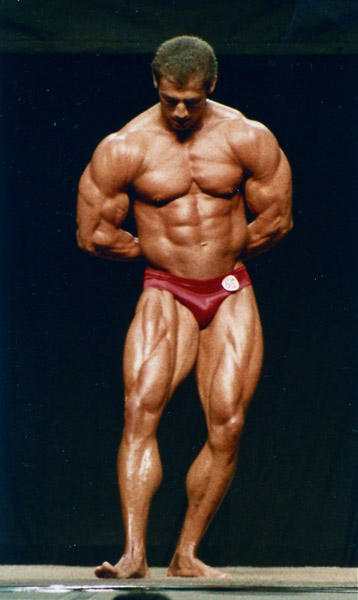
Doug Brignole is a former state, national and international bodybuilding champion, with a 38-year competitive career span. He is the author of the upcoming book “The Physics of Fitness”, an academic biomechanics book focused on physique development.






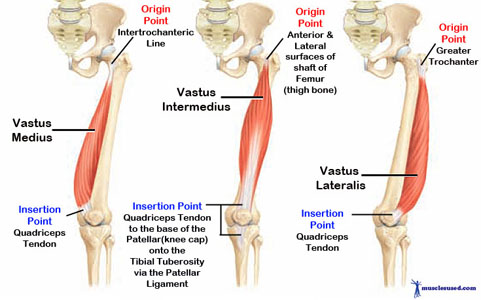
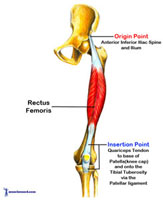
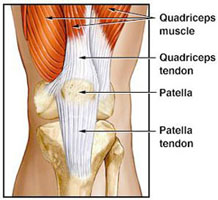
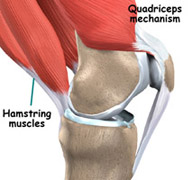
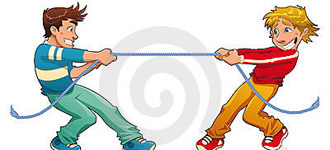
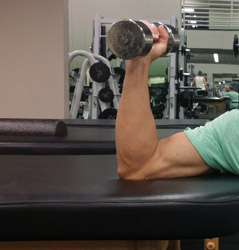
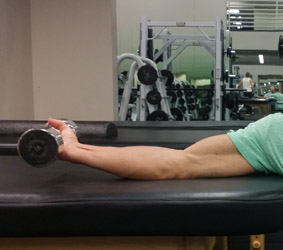
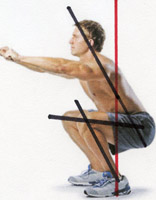
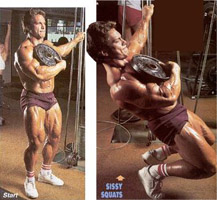
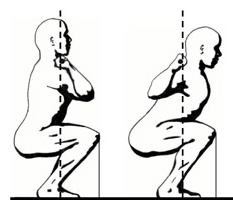
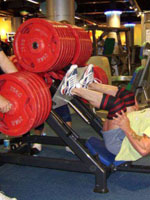
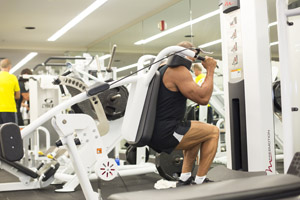














You must be logged in to post a comment Login